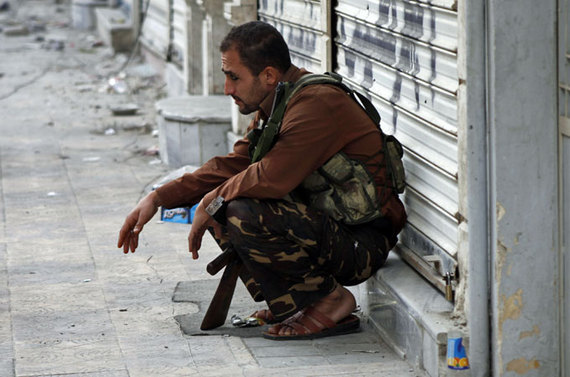2015 extends the crises of the Middle East. They impact the entire world, starting with the riots from 2009, continuing with the disastrous policies of the Mahmoud Ahmadinejad government and culminating with the Arab Spring chaos. "The blast" (like the blast of an explosion) of the revolution revives existing conflicts. However, despite many years of uncertainty (the last 25 years), the current situation looks like it would establish the foundation for a more stable future in the region.
Sunni Arabs show a moderate acceptance of Islamic politics. Obviously, there is not going to be an oasis of peace in the region, but at least we see changes taking place around the conflicts in Libya and Syria. And we can now also speak of a much more consolidated Iran.
The Middle East crises are far from being settled. Libya's instability still poses a threat to the Levant, North Africa and the Persian Gulf. Turkey, defeated by its internal problems, has become a power vacuum that cannot assume an important role in the region. Oil prices undermine the Middle East countries' exports (except Saudi Arabia, UAE and Kuwait, which have substantial cash reserves). This drop in oil prices has several consequences. On the one hand, Russia is destabilized, and I think I'm right when I say that it is really close to bankruptcy; on the other hand, it creates the opportunity for rebels to arm themselves, to create fuel reserves so that they have more resources in their fight, at least two to three years from now. Another consequence is that the Sunni Arabs will be looking to drop a deal with the Western powers, even if the rebels will not accept this. The great powers are eager to initiate negotiations and gain allies in their fight against the Islamic State.
This terrorist movement of the Islamic State is different from other jihadist movements like al-Qaeda. Unlike the Sunnis, who lost influence in the area, no longer being so powerful because they have dispersed, the Islamic State has created major changes in the area. It has become a real force. Countries like Turkey, Iran, Syria and Saudi Arabia had to change their internal policies as well as their approaches to the relationships among them.
Over the last six months, the coalition between Europe and U.S.A. against the Islamic State in Iraq and Syria weakened. Even if this coalition has expanded and included new members, Denmark and Belgium, this does not mean that this group operates in the interest of efficiency.
In reality, it is a group divided in two. On one side is the European group: the UK, France, the Netherlands, Denmark, and Belgium and. On the other side is the U.S. group with his partners: Jordan, Saudi Arabia, Qatar, the United Arab Emirates and Australia. This big group has enhanced its overall combat power and spread the burden more equitably. In reality, its members have divergent political views on how to manage the respective situations in Iraq and Syria.
The European group is facing economic problems and a new social problem. Increasing numbers of young, educated people convert to Islam. Because of that, and because a large number of Islamic State fighters have their origins in Europe, these governments fear that the militants could, at some point, return home and threat national security. The Islamic State is already threatening these countries by taking European hostages. These facts lead to radicalization inside Europe.
The coalition countries have compelling reasons for asserting an attitude and operating against the Islamic State regardless of its area of operation, even though we can observe a reserved attitude from the European side.
In 2014, elections took place in Europe. It is important to follow the red thread of these elections' results, especially because of the Ukrainian situation.
Lately, the temptation to change the European borders amplified. European borders were stabilized after World War II by the Helsinki Act in 1975 and the Paris Conference in 1990. The concept of "collective rights" for ethnic minorities was often associated with the right to self-determination. It was raised and used for the breakup of federations (USSR, Czechoslovakia, and Yugoslavia), referendums in Scotland and Catalonia, but also developments in Ukraine. The statements of Russian President Vladimir Putin in the past year bring forward as a theme the Molotov-Ribbentrop Pact, with Putin trying to invoke it. As we all know, there was a secret agreement within this pact, which made possible the outbreak of World War II.
All this creates effervescence in the EU. Against its will, Europe cannot be a reliable partner alongside the U.S.A. in the fight.
